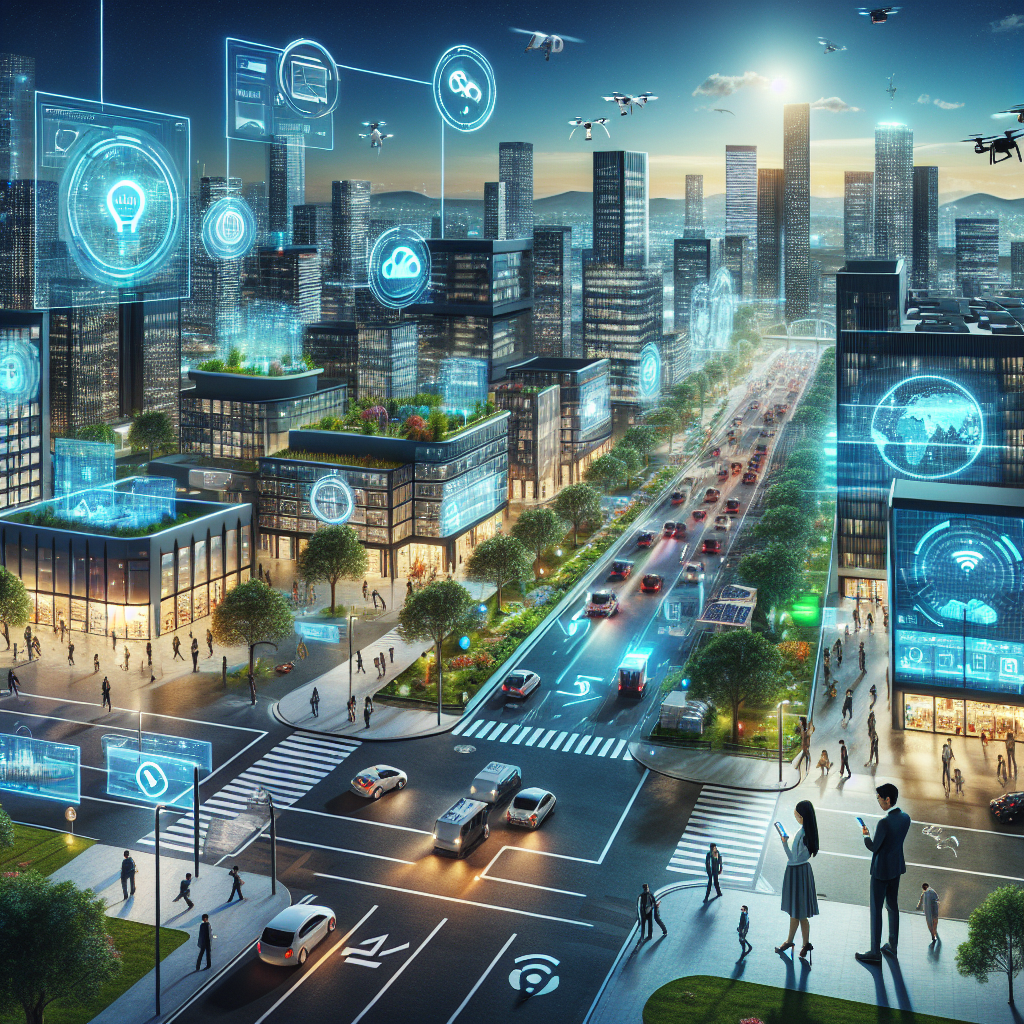Integrating IoT into Smart City Designs
Introduction to Smart Cities
Smart cities are urban areas that utilize advanced technologies to enhance performance, well-being, and sustainability. The integration of Internet of Things (IoT) technology plays a key role in transforming conventional cities into smart and efficient urban environments.
What is IoT?
The Internet of Things (IoT) refers to the connection of everyday objects to the internet, enabling them to send and receive data. This connectivity facilitates real-time monitoring and control, making various tasks easier and more efficient.
Key Features of IoT
- Connectivity: Devices can be connected over the internet.
- Automation: Processes can be automated based on data insights.
- Real-time monitoring: Immediate insights and updates on various metrics.
- Data analysis: Gathering and interpreting large datasets for smarter decisions.
The Role of IoT in Smart City Design
Smart city designs leverage IoT to enhance infrastructure, improve public services, and promote sustainability.
Benefits of Integrating IoT in Urban Living
- Improved Efficiency: Smart systems can automate mundane tasks.
- Enhanced Public Safety: Real-time data enhances emergency response efforts.
- Energy Conservation: Smart grids optimize energy use.
- Better Transportation: Smart traffic management reduces congestion.
Case Studies of Smart Cities Utilizing IoT
Several cities around the globe are integrating IoT into their urban frameworks. Here are a few notable examples:
1. Barcelona, Spain
Barcelona has implemented smart lighting systems that adjust based on the time of day and occupancy, significantly reducing energy consumption.
2. Singapore
Singapore’s Smart Nation initiative employs IoT in public transport systems, providing real-time updates to commuters.
3. Amsterdam, Netherlands
Amsterdam uses smart waste bins that signal when they’re full, optimizing waste collection routes.
Data Insights and Statistics
To further illustrate the impact of IoT in smart cities, consider the following statistics:
| Statistic | Value |
|---|---|
| Projected IoT Devices by 2025 | 75 billion |
| Reduction in Energy Costs | Up to 30% |
| Increase in Public Transport Efficiency | 25% |
Challenges in Implementing IoT in Smart Cities
While the potential benefits are great, several challenges must be addressed:
- Data Privacy: Ensuring citizens’ data is kept secure.
- Infrastructure: Upgrading existing infrastructure to support new technologies.
- Integration: Seamlessly integrating various IoT devices and systems.
- Cost: The financial burden of implementing IoT solutions can be significant.
Future Trends in Smart City IoT Integration
As we look to the future, the following trends are expected to shape the landscape of smart cities:
- Increased Focus on Sustainability: More cities will adopt eco-friendly practices.
- AI and Machine Learning: Enhanced data analysis capabilities for smarter decision-making.
- Expansion of 5G Networks: Greater connectivity and faster data transmission will facilitate IoT functions.
Conclusion
The integration of IoT into smart city designs represents a transformative leap towards enhancing urban living. As cities continue to evolve technologically, addressing challenges and fostering innovation will be vital for the successful implementation of IoT solutions.
“The cities of tomorrow will be driven by data, connectivity, and collaboration.” – Urban Futurist
FAQ
What are smart cities?
Smart cities leverage technology and data to enhance urban services and improve the quality of life for citizens.
How does IoT benefit urban living?
IoT enhances urban living by improving efficiency, safety, and sustainability through real-time data usage.
What challenges do cities face when adopting IoT?
Challenges include data privacy concerns, infrastructure upgrades, integration issues, and costs associated with new technologies.
What is the future of smart cities?
The future is likely to see greater sustainability, advanced data analytics, and the expansion of 5G networks to enhance IoT connectivity.
